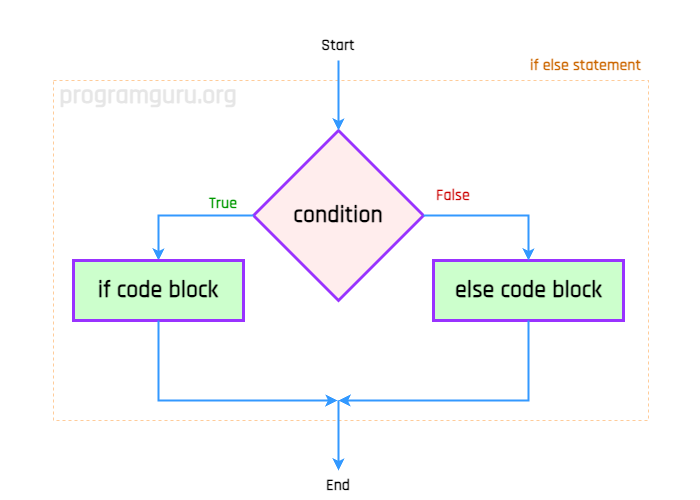In this tutorial, we will learn about if-else statements in Python. We will cover the basics of conditional execution using if-else statements.
An if-else statement is a conditional statement that executes one block of code if a specified condition is true, and another block of code if the condition is false.
The syntax for the if-else statement in Python is:
if condition:
# Code block to execute if condition is true
else:
# Code block to execute if condition is falseThe if-else statement evaluates the specified condition. If the condition is true, the code block inside the if statement is executed; otherwise, the code block inside the else statement is executed.

num.num.num is even or odd.num is even or odd.num = 10
if num % 2 == 0:
print(f'{num} is even.')
else:
print(f'{num} is odd.')10 is even.
str.str.str starts with a specific value.str = 'Hello, world!'
if str.startswith('Hello'):
print('String starts with 'Hello'.')
else:
print('String does not start with 'Hello'.')String starts with 'Hello'.
num.num.num is positive or negative.num is positive or negative.num = -5
if num > 0:
print(f'{num} is positive.')
else:
print(f'{num} is negative or zero.')-5 is negative or zero.